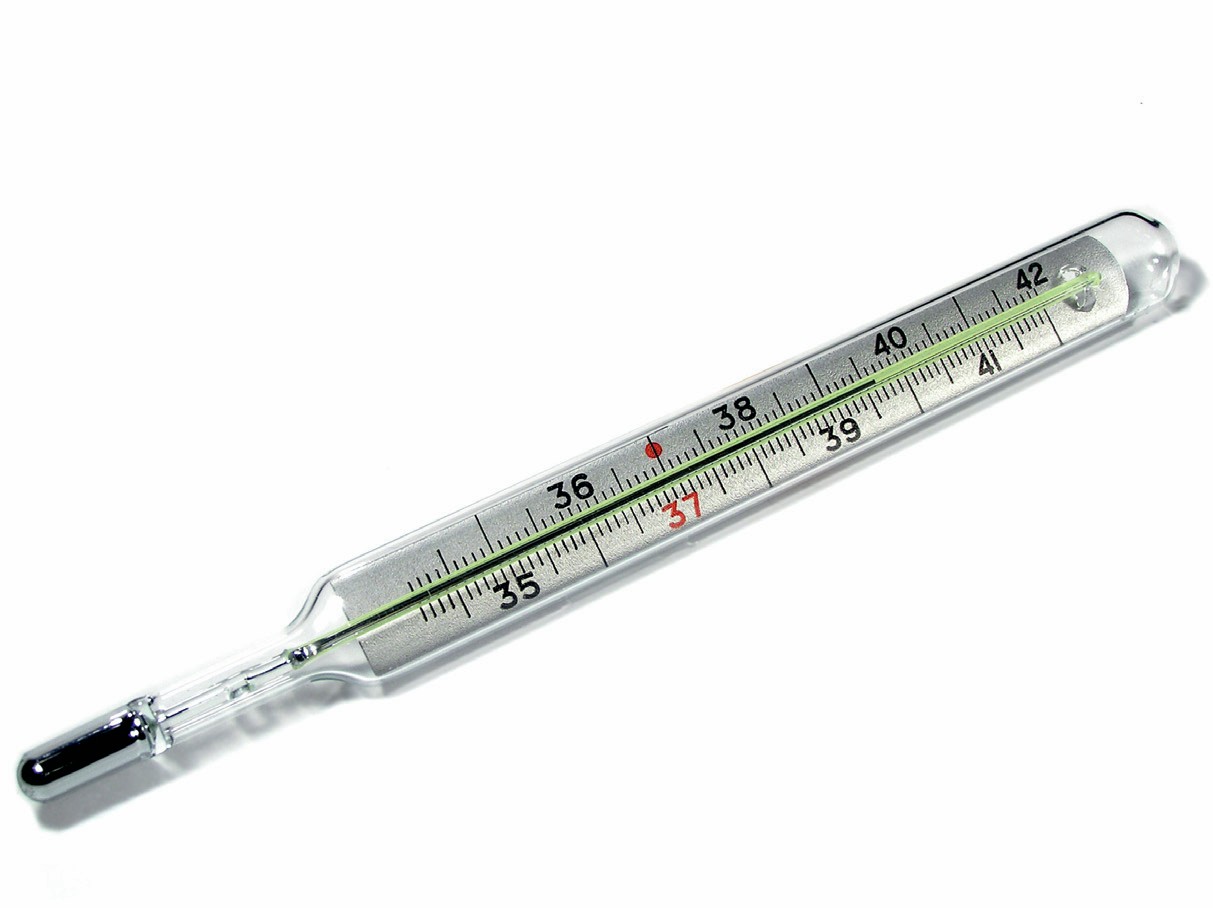
Words meaning ‘cold’ and ‘warmer’ must be as old as human language, but scales that give temperature a numerical, measurable value are much more recent. All practical thermometers rely on some physical property of an object that varies with temperature in a repeatable way. The first were made in the eighteenth century; one of the earliest used red wine that rose up a tube as it expanded with increasing temperature. Present-day liquid-in-glass thermometers (1) use ethanol (usually coloured red) or mercury. Other traditional designs that rely on thermal expansion (2) to indicate rising temperature use the volume of a fixed mass of gas (3), or the bending of a bimetallic strip (4). Another type of gas thermometer uses changes in pressure of a fixed mass of gas kept at constant volume (3). A design attributed to Galileo (5) uses sealed glass bulbs partly filled with coloured liquid to give them a range of densities close to that of water. As temperature rises, the water expands so its density falls and the denser bulbs sink; the temperature is indicated by the bulb that ‘floats’ in mid-water. More recent designs use changing resistance (6). Approximate temperature can also be indicated by the colours of liquid crystals (7).
The thermal expansion of many substances can be described to a fairly good approximation by a simple relationship (Figure 2.1):
Your organisation does not have access to this article.
Sign up today to give your students the edge they need to achieve their best grades with subject expertise
Subscribe




